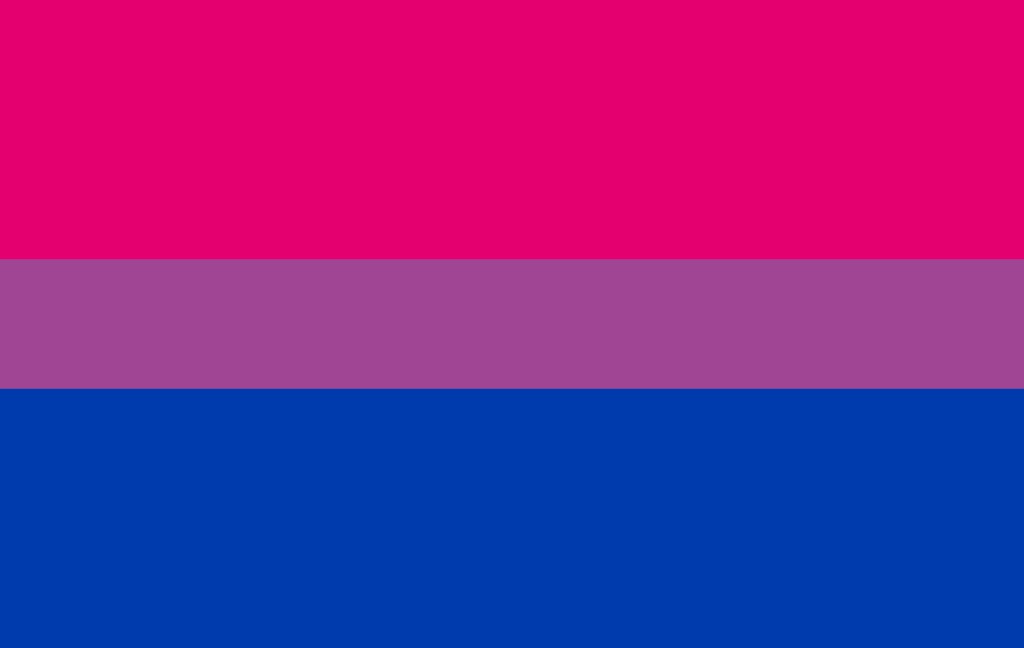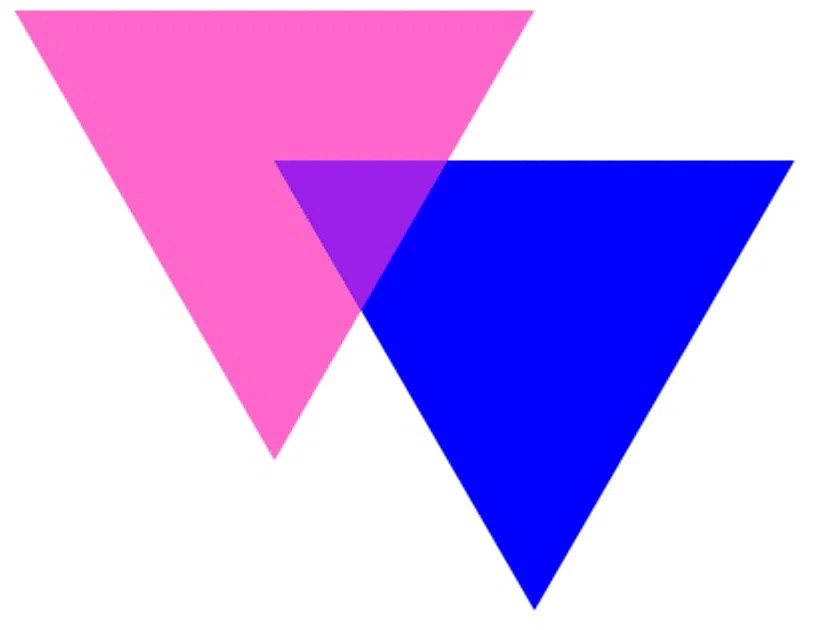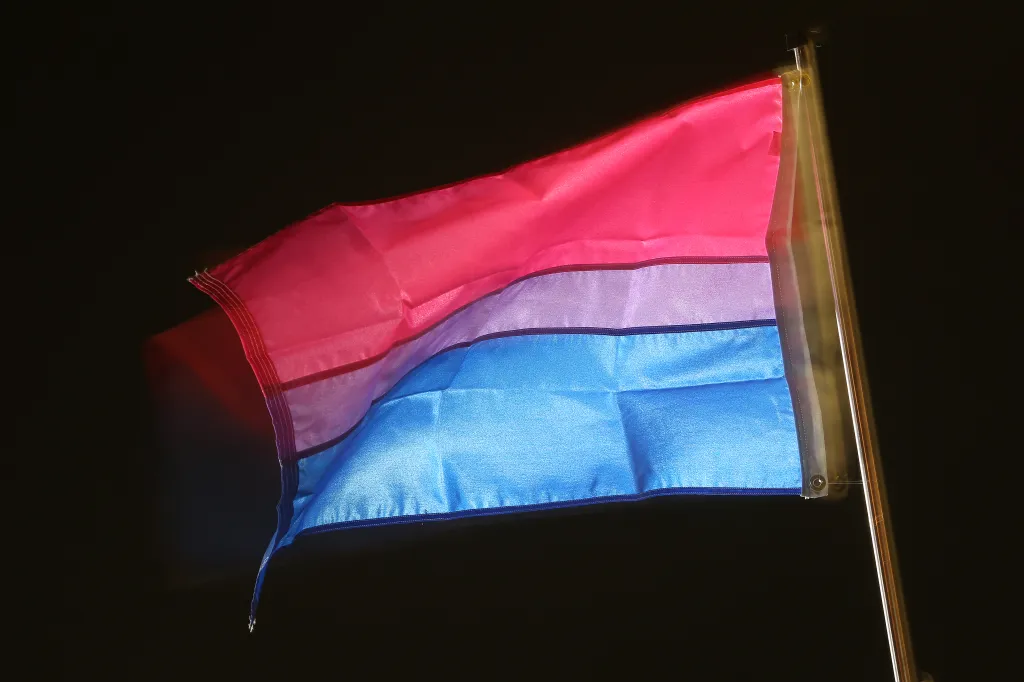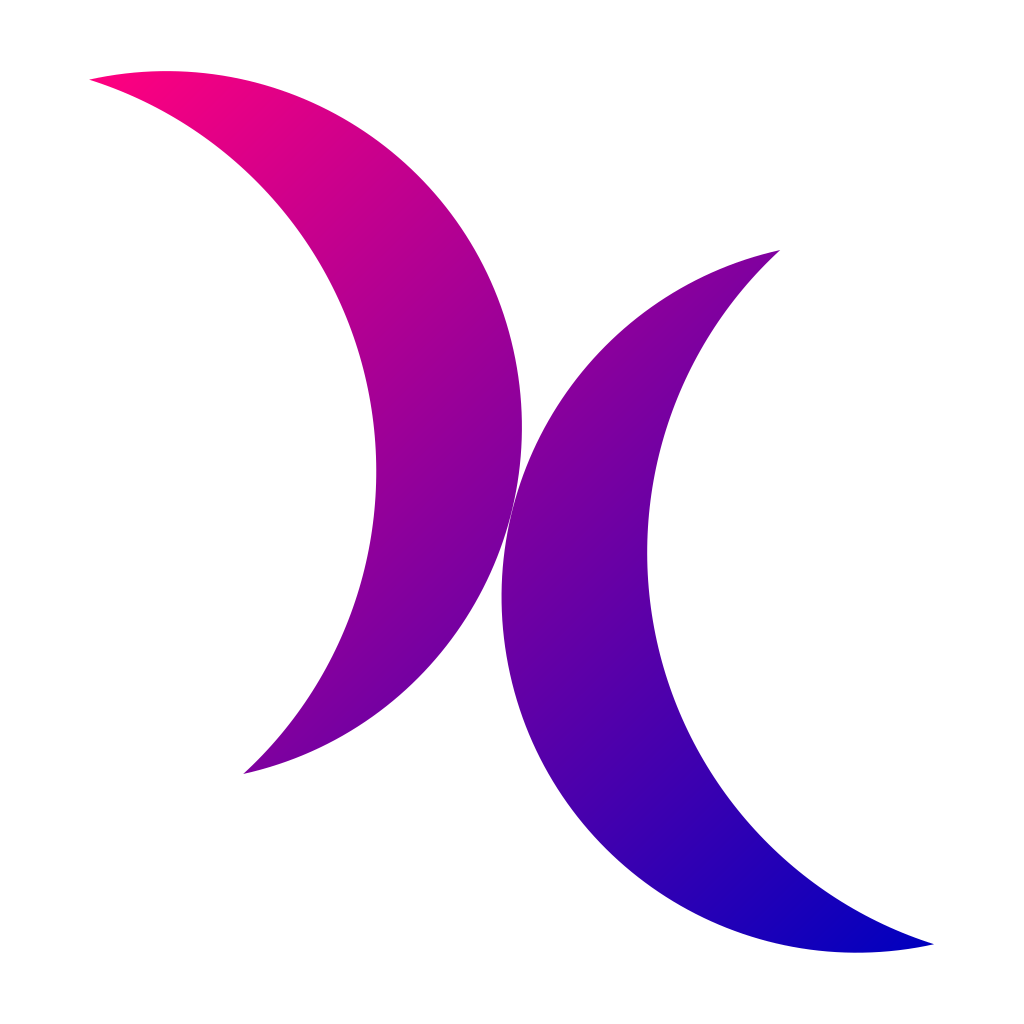Every single thing you need to know about the iconic bisexual flag, including who invented it

The bisexual flag is a striking and visually appealing way to show the world your bi pride. (Getty)
The bisexual flag is a beautiful, striking and symbolic way to show your bi pride, and one that holds detailed meaning and history for the community.
This pride flag for the bisexual community was created by Michael Page and was quickly adopted by bisexual folk after it was first unveiled in 1998.
The bisexual flag consists of three solid horizontal bars: two-fifths pink, one-fifth purple, and two-fifths blue. In the centre, the purple stripe is an overlap of the pink and blue bars.
Here is everything you need to know about the bisexual flag, including what these vibrant colours mean.

What do the colours on the bisexual flag mean?
The bisexual flag includes three colour stripes, pink, blue and an overlapping purple. Each layer of the flag has a different meaning that contributes to the definition of bisexuality.
The top bar is magenta pink and represents attraction toward the same sex.
The bottom bar is royal blue and symbolises attraction to the opposite sex.
In the middle the thinner bar is lavender purple, the overlap of the pink and blue, represents sexual attraction to two or more genders.
The original design has taken on new meaning, originally the purple overlap was considered as an attraction to “both sexes.” However, it is now widely understood to represent attraction regardless of sex or gender.
The flag symbolises bisexual pride, visibility, and the community’s unique identity within the larger LGBTQ+ spectrum.
Page based the flag on the popular “Bi-Angles” symbol of triangles and combined them into a flag that used 40% pink (to represent homosexuality) 20% purple (to represent a combination of homosexuality and heterosexuality) and 40% blue (to represent heterosexuality).
These “Bi-Angles” were designed by Liz Nania, who organised the first national bisexual contingent for the 1987 March on Washington.

The pink triangle was used by the Nazis during world war two to mark male homosexuals. Lesbians were categorised with a black triangle. Nania overlapped pink and blue triangles, each representative of the gender binary. Like the flag, where they overlap is a deep purple, made from the combination of pink and blue.
Page previously wrote: “The key to understanding the symbolism of the Bi Pride Flag is to know that the purple pixels of [colour] blend unnoticeably into both the pink and blue, just as in the ‘real world,’ where bi people blend unnoticeably into both the gay/lesbian and straight communities.”

Who is Michael Page?
Page is the creator of the bisexual flag. He is a Florida based LGBTQ+ activist who decided that he wanted a prominent symbol for the bisexual community just as the gay pride (rainbow) flag was prominent for the gay community after its creation by Gilbert Baker in 1978. He also set up the BiCafe website – now closed.
The first bisexual pride flag was unveiled at the BiCafe’s first-anniversary party on December 5, 1998.

What other symbols are there for bisexuality?
Alongside Page’s bi flag, and Nania’s “Bi-Angles”, the double crescent moon is another symbol of the bisexual community.
Some people don’t want to be represented by the updated down double triangles as it evokes a connection to Nazi concentration camps, so the double crescent moon is another alternative.
The double crescent moon symbol was created in 1998 by Vivian Wagner.
The double moon symbol consists of two crescent moons that with a blue to pink gradient.
This symbol also features the purple/lavender overlap, located where the pink and blue colours meet.
Wagner also hoped the symbol would represent gay-lesbian-bi solidarity.
How did this story make you feel?

